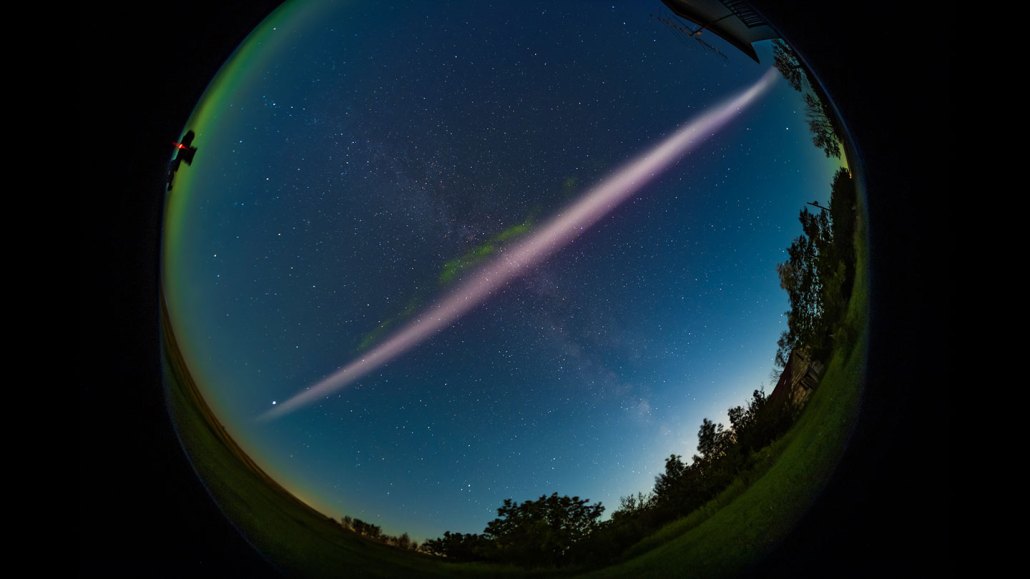
Scientists are struggling to figure out the right recipe of atmospheric conditions that create STEVE (purple) and its sidekick, the picket fence (green), seen in this all-sky photo from Alberta, Canada.
© 2022 Alan Dyer/AmazingSky.com
From the pristine dark of his backyard in rural Alberta, Canada, Alan Dyer has taken stunning photos of a rare sky glow called STEVE.